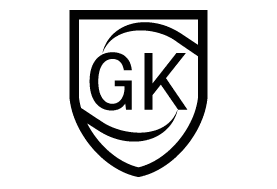Like the computer microchip, the evolution of solar panel and solar cell performance has been dramatic and is accelerating. Richard Swanson, founder of SunPower wrote a seminal paper in 2006 where he forecast how a steady and steep fall in the cost of solar panel production over time would lead to a corresponding increase in the deployment of solar panels. The rate of this relationship has led some to suggest that we are headed towards a time when solar panels will cost nearly zero to produce.
Meanwhile, the performance of solar panels has increased markedly over the past few decades, with solar cell efficiency now ranging between 14-22.5% for mass-produced solar cells.
Performance Improvements in Solar Cells and Solar Panels
Like the computer microchip, the evolution of the solar cell and solar panel has been dramatic and is accelerating. As with any new technology, there is a pronounced evolution path for solar systems, starting with the heart of the system, the solar cells and solar panels. Given the complexity of mastering this new technology when it first emerged, there were a number of variables to be managed, from the original creation of the solar cells and solar panels, to the integration of viable systems, to scaling the entire industry to create and advance the industry as a whole.
At various points, each of these major drivers has seen its own emphasis. Initially, solar cell and solar panel performance was vital, simply to establish the viability of the concept of solar generation.
Focusing on the performance of the cells, the overall objective is to improve the efficiency with which solar cells convert light energy to electrical energy. For very high-end systems, efficiency ratings of approximately 40% have been achieved, using what are known as multi junction cells (multiple layers of silicon), with each layer tuned to trap specific wave frequencies (colors of light).
These cells, however, are very expensive to produce and historically have been used mainly in space exploration, where efficiency is vital, due to weight and volume restrictions in space payloads. Improvements in the core performance of more mainstream solar cells and solar panels has accelerated in recent years, and there is a robust competition between industry leaders, with the leaders producing efficiency ratings of 22-22.5% for the top-rated solar cells and panels.
Performance Indicators
In addition to these performance improvements, the overall performance of solar systems is subject to a number of interrelated factors:
- Pre-Module Losses – These are a combination of “tolerance of rated power” (the variance from the stated power output to the actual output, with an industry variation of up to 5%) plus external solar system site factors such as:
- Shadows (from chimneys, trees and other buildings)
- Dirt (accounting for losses up to 4% in temperate regions with some frequent rain and up to 25% in arid regions with only seasonal rain)
- Snow (depending on location and maintenance efforts) and
- Reflection (which varies with the angle of incidence of the incoming sunlight, plus the degree of diffuse light from clouds, versus direct sunlight) that inhibit the amount of sunlight used in solar power generation
- Module Losses – These include the losses due to the limits of the solar cell efficiency, plus thermal losses (which increase with ambient temperature)
- System Losses – These include losses from
- Resistance in wiring (which occurs with all cables)
- Maximum Power Point Tracker (MPP) losses (the aability of the MPP tracker to consistently find the maximum power point and thus ensure maximum efficiency)
- Inverter inefficiency
- Inverter mis-sizing (If the inverter is undersized, power is clipped, i.e. lost, for high intensity light, and if it is oversized, the inverter’s efficiency will be too low for low intensity light)
- Transformer losses (for solar systems connected to local power grids)
- Operation & Maintenance – In simple terms, this means system downtime, which happily is normally very little for solar panels and solar systems
The essential takeaway is that there is a constant push for performance improvements in solar cells and solar panels. However, as with any advanced technology, the overall performance is affected by a number of factors, and thus, the performance experienced at the point of consumption is always subject to these limitations to varying degrees. Fortunately, there have been significant cost reductions alongside these continuing performance improvements.
Cost Reductions in Solar Cells and Solar Panels
Richard Swanson’s 2006 paper, “A Vision for Crystalline Silicon Photovoltaics”, cited the following major factors that would lead to falling costs for solar panel production:
- Solar cell size – larger cells reduce the total handling required for a given power output, since fewer cells would be required for the same number of solar panels
- Thinner silicon wafers, which use less silicon and therefore reduce cost
- Manufacturing techniques like screen printing, wire saws and more efficient processes to drive down costs
- Producing more efficient solar cells and solar panels, not only result in performance increases; they also bring added benefits throughout the value chain, for example, by requiring less glass and other materials in the final production
- Economies of scale as the industry matures and larger, more automated factories emerge
The following graph shows the trend for the cost of ground mounted solar photovoltaic projects, and serves as an indicator of how dramatic these solar power cost reductions have been over time.
The economies of scale factor is currently seen by the US National Renewable Energy Laboratory as the dominant factor. In their view, economies of scale outweigh labor costs – even in China – as the key driver for reducing solar panel manufacturing costs.
That insight is very positive news globally, where there is the desire and means to create homegrown solar manufacturing at scale. This can also lead to disparities in the price of solar panels in various parts of the world. That is the result of well-established large scale manufacturing serving regional demand, as is happening in China and Germany. By contrast, the price of solar panels is notably higher in California and the US in general than in Germany, where residential solar systems are far more common. This is a well-known issue within the US solar industry, which is advocating and making strides in this area, given the huge anticipated demand for solar power over the coming decades.
Bildquellen
- Planungspapiere: Rawpixel.com | Shutterstock.com



